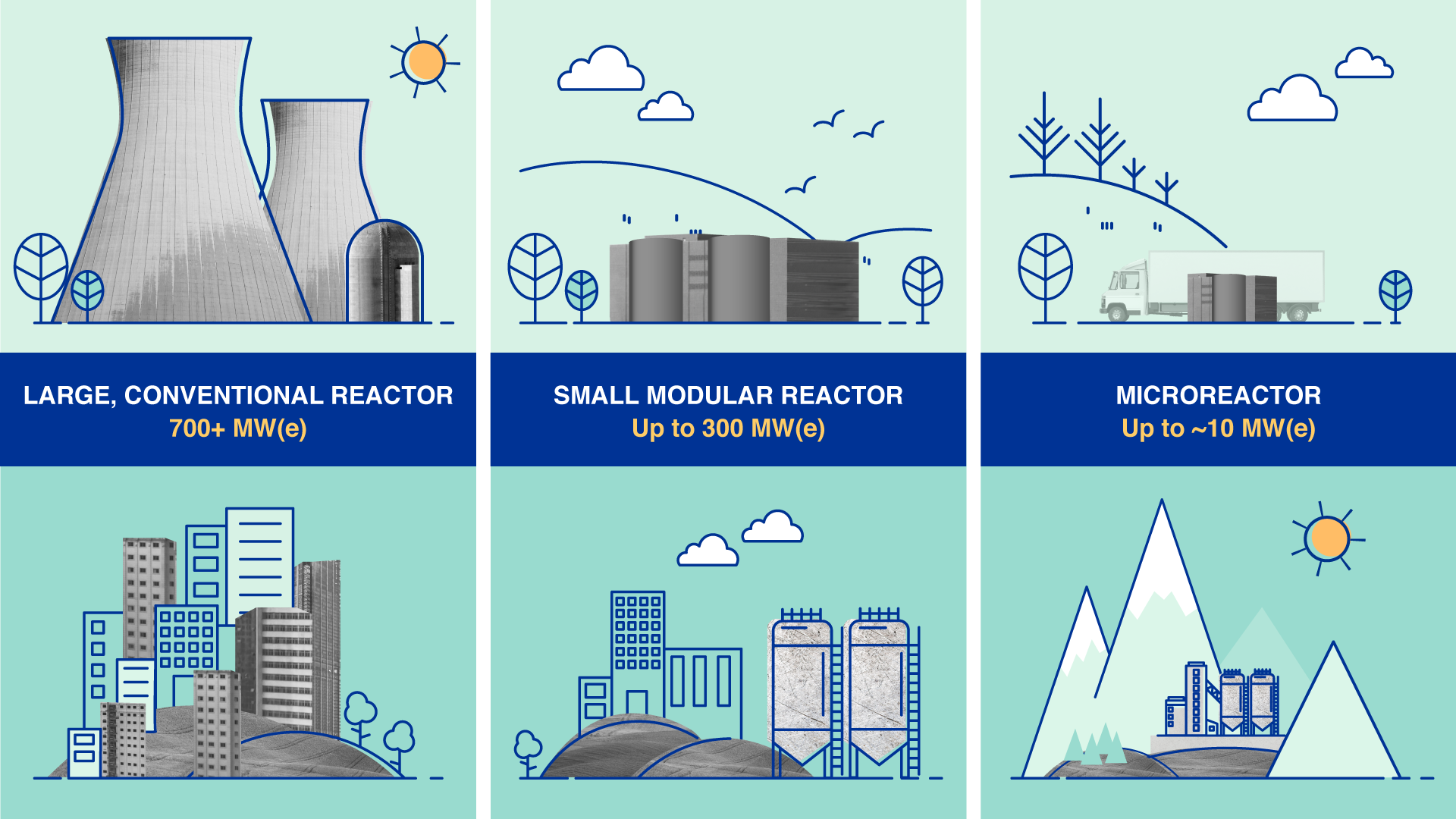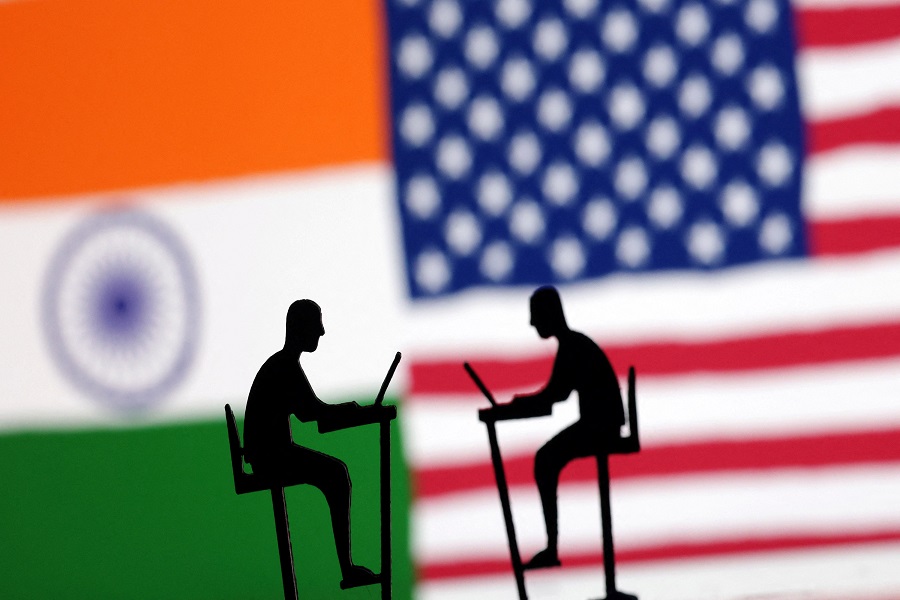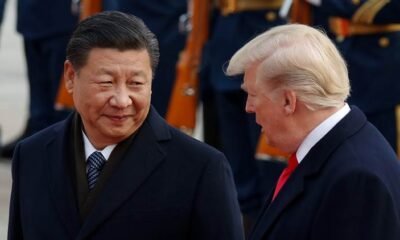Trends
Indo-US N-Deal Gets A Final Push From Outgoing Biden Administration—But What’s On Trump’s Agenda?
Published
9 months agoon

The outgoing Biden administration seems to be pulling out all the stops to nudge the Indo-US N-Deal forward before it hands over the reins to Donald Trump. US National Security Advisor Jake Sullivan’s recent remarks hint at an attempt to untangle the long-standing bureaucratic and legal hurdles that have kept this deal stuck in limbo.
But the real question is-Will Trump pick up where Biden left off, or will he chart his own unpredictable course?
A Last-Minute Attempt
Sullivan’s push includes measures like potentially removing Indian government-owned nuclear bodies from the US entity list. That sounds promising, but the bigger challenge lies in managing two thorny legal issues—one on each side.
For the US, it’s the ‘10CFR810’ authorisation, a rule under the Atomic Energy Act that restricts American nuclear vendors from manufacturing equipment or conducting nuclear design work in India.
For India, it’s the Civil Liability for Nuclear Damage Act, 2010, which makes foreign suppliers wary of any liability risks.
The Biden administration’s effort is commendable, albeit a little late in the day. But whether this momentum survives the transition to Trump’s presidency is anyone’s guess.
The Trump Factor. Transactional, Unpredictable
When it comes to Trump, New Delhi might have to brace itself for a more transactional approach. Trump’s focus has always been on “America First,” which translates to bringing manufacturing jobs back to the US. This could complicate India’s hopes of getting a waiver for the ‘810’ authorisation. After all, India wants to co-produce nuclear components for atomic power projects—an idea that clashes with Trump’s preference for keeping jobs within American borders.
Trump’s past remarks on nuclear power provide some clues. While he’s bullish about it, he’s also wary of projects that overshoot budgets—a problem that has plagued nuclear ventures in the US and Europe. One possible solution? Spread out manufacturing to lower costs, a strategy that could align with India’s aspirations. But whether Trump sees it that way remains uncertain.
Small Modular Reactors: A Common Ground?
Amid all the uncertainty, there’s one area where both sides might find common ground—Small Modular Reactors (SMRs). These compact and cost-effective reactors are gaining traction in India as a strategic priority. Interestingly, Trump has shown enthusiasm for SMRs, which could open the door for meaningful collaboration.
In a pre-election chat with Joe Rogan, Donald Trump got candid about his views on nuclear power. While he acknowledged that large nuclear reactors on the grid are “very clean,” he didn’t hold back on their downsides—namely, their complexity and tendency to go wildly over budget. “They build these massive things. Then the environmentalists get in,” Trump remarked, suggesting that Small Modular Reactors (SMRs) could be the game-changer to sidestep these challenges.
Trump pointed out that smaller reactors, which can be built in factories, offer a simpler, more cost-effective solution compared to their oversized counterparts. This resonates with the International Atomic Energy Agency’s (IAEA) call to double nuclear power capacity by 2050 if we’re serious about hitting net-zero emissions. The problem? Nuclear power today is expensive, slow to build, and carries the potential for catastrophic risks. SMRs promise to tackle most of these issues head-on.

India’s Bet on SMRs. Clean Energy Meets Foreign Policy
At the same time, India is quietly making moves to secure a spot in the global manufacturing value chain for SMRs. For India, this isn’t just about transitioning to clean energy—it’s also a clever foreign policy strategy. Bundling SMRs as a tech-driven export could strengthen India’s global standing while addressing its energy commitments.
What Are Small Modular Reactors (SMRs)?
SMRs are compact nuclear reactors with a capacity of 30 MWe to 300 MWe per unit, offering a cleaner and more scalable solution for power generation. Their appeal lies in their ability to meet surging electricity demand, especially from power-hungry industries like AI, machine learning, and data centers.
While several types of SMRs are in development, the light water reactor design is the most common. These are essentially scaled-down versions of traditional nuclear plants that are water-cooled, making them easier to design and navigate through regulatory hurdles. Trump hit the nail on the head when he likened SMRs to mass-produced factory products—compact, efficient, and faster to deploy.
India’s Department of Atomic Energy is reportedly in talks with Holtec International, a New Jersey-based company known for its expertise in capital nuclear components. Holtec, one of the world’s largest exporters in this niche, could be a key collaborator in India’s quest to embrace SMR technology.
Holtec International is pitching a bold idea to reinvigorate the long-stalled nuclear engagement between India and the US, nearly two decades after the historic nuclear deal. The centerpiece? Its flagship SMR-300 small modular reactor, with a vision for a public-private partnership. The proposal includes deploying SMR-based projects on existing coal plant sites in India and, eventually, exploring joint manufacturing opportunities.
While Holtec’s SMR-300 is still in the design and review stages, small modular reactors are already making waves globally.
Russia: The Akademik Lomonosov, a floating SMR power unit with two 35 MWe modules, began commercial operations in May 2020.
China: The HTR-PM, a demonstration SMR project, connected to the grid in December 2021 and reportedly began commercial operations in December 2023.
Holtec’s SMR-300 is one of several advanced reactor designs competing for attention, alongside contenders like Rolls-Royce’s SMR, NuScale’s VOYGR SMR, Westinghouse’s AP300 SMR, and GE-Hitachi’s BWRX-300. Backed by the US Department of Energy’s Advanced Reactor Demonstration Programme, Holtec’s SMR-300 received $116 million in 2020 to accelerate design and licensing. It’s currently under review for deployment in the UK and Canada, with ambitions to go global.

India’s Nuclear Hurdles
Despite the potential, legal and regulatory roadblocks are casting long shadows on India’s nuclear ambitions.
India’s Civil Liability for Nuclear Damage Act, 2010
This legislation, designed to ensure compensation for victims of nuclear accidents, has spooked foreign investors. Why? It channels liability to equipment suppliers, which companies like GE-Hitachi, Westinghouse, and France’s Areva see as a major risk. Understandably, no one wants to shoulder potential future liabilities for accidents.
America’s ‘10CFR810’ Authorisation
On the US side, the 10CFR810 regulation permits companies like Holtec to export nuclear tech to India under strict safeguards. However, it doesn’t allow them to manufacture nuclear equipment or perform design work in India. From New Delhi’s perspective, this is a deal-breaker—it wants to co-produce SMRs and other components to build domestic capacity and cut costs.
Why the US and India Need Each Other
While India’s nuclear programme boasts expertise in smaller reactor types like 220MWe pressurised heavy water reactors (PHWRs), these rely on heavy water and natural uranium—technologies increasingly out of sync with the dominant light water reactors. Meanwhile, the US, with its advanced reactor designs, faces challenges of high labour costs and rising protectionism.
Holtec’s strategic pitch for collaboration illustrates that neither country can compete with China alone. A joint effort could marry India’s cost-effective manufacturing capabilities with US technological advancements, creating a competitive edge in the global SMR market.
The Russian Angle
Adding another layer, Russia is reportedly keen to expand its nuclear partnership with India to include SMRs. While this could open additional avenues, it also raises geopolitical questions, particularly given India’s growing strategic ties with the US.
The Last Bit
Indian officials are already in detailed technical discussions to assess the feasibility of SMR deployment, guided by the framework of the Atomic Energy Act, 1962. Conversations also include the possibility of involving private players and startups in this emerging sector, signaling a potential shift in India’s traditionally state-dominated nuclear space.
For Indo-US N-Deal partnership to gain momentum, both sides need to address their respective roadblocks—India’s liability law and the US’s 10CFR810 authorisation with China aggressively advancing in the SMR domain.
The coming months will reveal whether the US and India can align their strategies to turn SMRs into a symbol of their partnership or let the opportunity slip through their fingers in the face of rising competition.

You may like
-


A Different Trump And A Different Kim Jong Un, Friends Or Foes? And What About New Found Friendship With Russia?
-


Has Trump Softened His Stand With China, Possibly Extending A ‘Green Leaf’? Trump’s Talk On Tariffs Helped Chinese Exports?
-


Israel-Hamas Ceasefire. Who Really Brokered The Peace—Biden Or Trump? Is This Really A Ceasefire Or An Agenda Hidden?
-


Finally, The War To End? Qatar’s Gaza Ceasefire Proposal. Israeli Soldiers Recount Horrors Of Gaza War Threaten To Stop Fighting If Gaza Ceasefire Deal Not Secured
-


The $14.9 Billion Nippon-U.S. Steel Deal Falls Apart, But Exposes A Rival CEO’s “Cookie Jar” Moment. Doubts, Influence, And What Really Happened
-


Biden’s More Fire Arsenal To Israel Before Leaving Office Putting A Final Stamp On His Legacy Even As Israel Escalates Attacks On Gaza